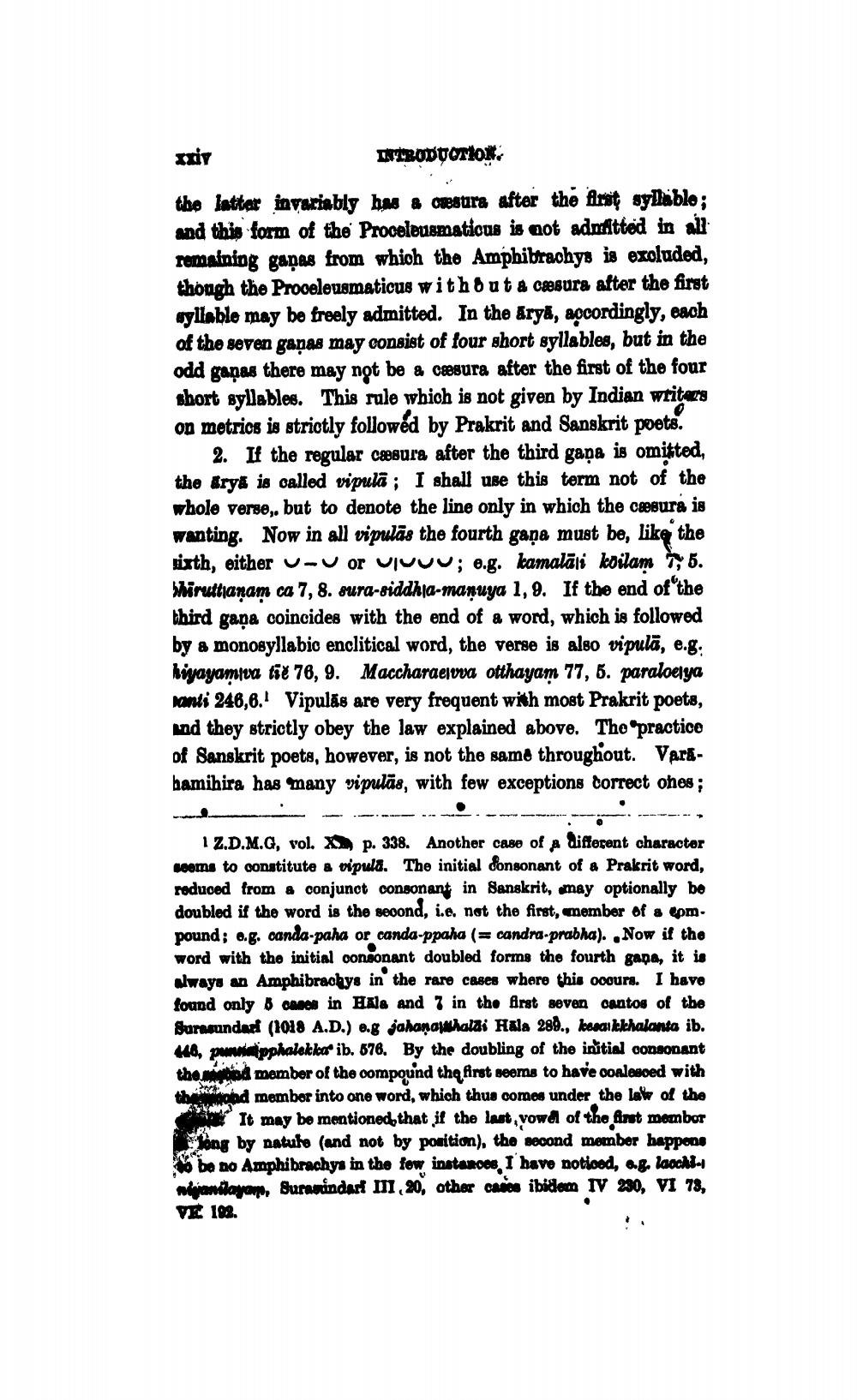________________
XLİY
INTRODUCTION the latter invariably has & omstrs after the Arst syllablo; and this form of the Procelousmaticus is aot adufitted in all remaining ganas from which the Amphibrachys is exoluded, though the Procelousmaticus without a cæsura after the first syllable may be freely admitted. In the arya, apcordingly, each of the seven ganas may consist of four short syllables, but in the odd ganas there may not be & cæsura after the first of the four short syllables. This rule which is not given by Indian writers on metrics is strictly followed by Prakrit and Sanskrit poets.
2. If the regular cæsura after the third gana is omitted, the Arya is called vipulā ; I shall use this term not of the whole verso, but to denote the line only in which the cesura is wanting. Now in all vipulās the fourth gana must be, like the sixth, either u-u or vivuu; 0.g. kamalāji koilam 7; 5. Whiruttianam ca 7, 8. sura-siddhia-manuya 1, 9. If the end of the third gana coincides with the end of a word, which is followed by a monosyllabic enclitical word, the verse is also vipulā, e.g: kiyayamna tid 76, 9. Maccharaeivva otthayam 77, 5. paraloelya santi 246,8. Vipulās are very frequent with most Prakrit poets, and they strictly obey the law explained above. The practico of Sanskrit poets, however, is not the same throughout. Vardhamihira has many vipulās, with few exceptions correct ones ;
1 Z.D.M.G, vol. O p. 338. Another case of a different character seems to constitute & vipula. The initial fonsonant of a Prakrit word, reduced from a conjunct consonant in Sanskrit, may optionally be doubled if the word is the second, i.e. not the first, member of a tom. pound; 0.g. canda-paha or canda-ppaha (= candra-prabha). Now if the word with the initial consonant doubled forms the fourth gapa, it is always an Amphibrackys in the rare cases where this occurs. I have found only 8 calon in Hua and 7 in the first seven cantos of the Surnaundari (1018 A.D.) 0.g jahana whaldi Hala 280., kosaik chalanta ib. 448, promotion pphalokka ib. 676. By the doubling of the initial consonant the m ind member of the compound thą first seems to have conlevoed with
and member into one word, which thus comes under the laws of the
It may be mentioned that if the last, yowd of the first mombor Song by natuha (and not by position), the second member happens to be no Amphibrachys in the few instances, I have noticed, ag. laochdwigjenitayampo, Suramindart 1,20, other casco ibidee IV 200, VI 78, VE 182.




